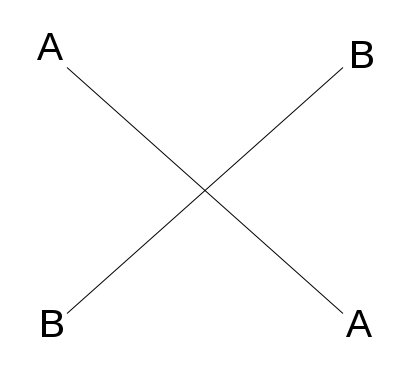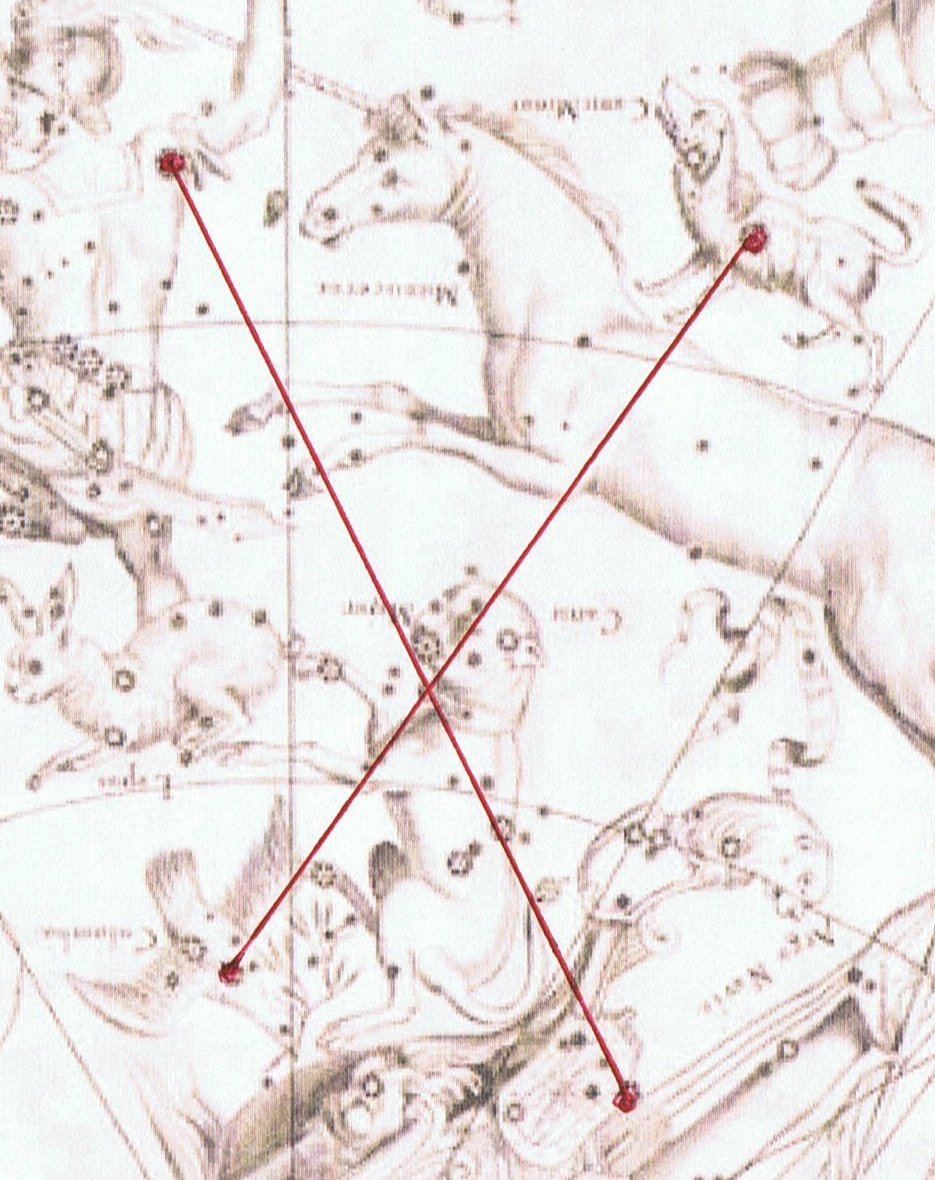When read left to right,
up to down, the first
topic (A) is reiterated
as the last, and the
middle concept (B)
appears twice in
succession. (Also, the
middle concept could
appear just once.)
"Chiastic
structure (also
called chiastic pattern
or ring structure) is a
literary device for
chiasmus applied to
narrative motifs, turns
of phrase, or whole
passages. Various
structures of chiasmus
are commonly seen in
ancient literature to
emphasize, parallel, or
contrast concepts or
ideas ...
These
often symmetrical
patterns are commonly
found in ancient
literature such as the
epic poetry of Odyssey
and Iliad. Various
chiastic structures are
also seen in the Hebrew
Bible and the New
Testament, where
biblical writers used
chiasmus to give meaning
to their writings or to
highlight details of
particular importance."
To
highlight details of
particular importance
the letter X could be
used. Basically the structure
exemplified above means there are only 2
subjects, not 4.
Castor
is not Pollux, but after
his death he will come alive
again (like
Likāvaka). Possibly
this explains why there
is a dove (Phakt, α Columbae)
type of
'stone image', it could
represent the manu
rere of Castor.
If so, then Castor could reappear
30 days later in the
'zodical land' as Procyon:
Sun, the immortal 'one', does not die. Instead he perhaps could follow the Milky Way south, a journey which takes him 33 days and where he - like Taetagaloa - will find a great ship (Argo Navis), possibly to help him sail across the Milky Waves (instead of flying over like Castor):
|
Betelgeuze |
α Orionis |
0.58 |
07° 24′ N |
05h 52m |
89.3 |
|
Naos |
ζ Puppis |
2.21 |
39° 52′ S |
08h 02m |
122.3 |
| Albatain 4 (31) |
5 |
30 |
| June 16 |
17 (168) |
 |
 |
| Ca4-11 |
Ca4-12 (88) |
| te moko |
te hokohuki |
| Girtab (267.6) |
Apollyon (268.9) |
| Saiph (86.5) |
Betelgeuze (88.3) |
| Heka 10 |
11 (64) |
12 |
| July 18 |
19 |
July 20 (201) |
 |
 |
 |
| Ca5-14 |
Ca5-15 (120) |
Ca5-16 |
| kua haga te mea ke |
manu puoko i tona ahi |
kua heu te huki |
| no star listed |
Drus (119.9) |
Naos (121.3) |
... in the ceremonial course of the coming year, the king is symbolically transposed toward the Lono pole of Hawaiian divinity ... It need only be noticed that the renewal of kingship at the climax of the Makahiki coincides with the rebirth of nature. For in the ideal ritual calendar, the kali'i battle follows the autumnal appearance of the Pleiades, by thirty-three days - thus precisely, in the late eighteenth century, 21 December, the winter solstice. The king returns to power with the sun ...
There are 30 days from the June solstice up to and including July 20, but by adding 3 it becomes 33:
| Albatain 6 (33) |
7 (399) |
8 |
9 |
| June 18 |
19 |
20 |
21 (172) |
 |
 |
 |
 |
| Ca4-13 |
Ca4-14 |
Ca4-15 |
Ca4-16 (92) |
| kua tuu tona mea |
te henua |
te hau tea |
mauga hua - te henua |
| η Leporis (89.0), Praja-pāti, Menkalinan, Mahashim, and γ Columbae (89.3) |
η Columbae (89.7), μ Orionis (90.3) |
6h (91.3) |
ξ Orionis (92.5) |
| χ² Orionis (90.5), ν Orionis (91.4) |








